One, 4K high score is not worth buying
4K TV is how is it? Is this product worth buying?
The author's friends always asked these basic questions when they were on the market. In the face of the ever-changing display technology, the author suddenly realized that as a friend who usually does not pay much attention to this market, it may not be very clear for many avant-garde changes. In the past, the author and my colleagues have been popularizing what is the wide-view panel and the principle of LED-backlit TV. These are once confusing changes, and many of our friends have gradually learned. However, the products in the stores have undergone new changes. How to help “Xiaobai†quickly understand the new developments of display product stores is a problem to be solved in this paper.
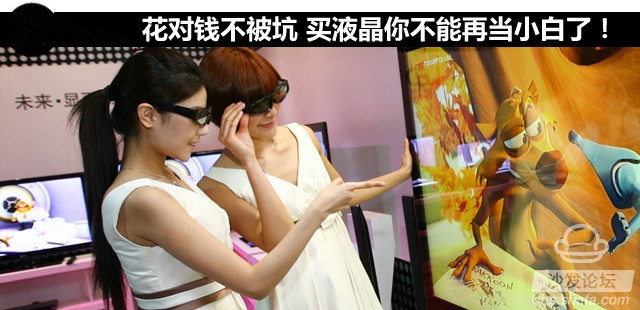
First we solve the problem of 4K resolution. Resolution is an important indicator of the current display products, from the mobile phone to the large-screen display, the resolution of the standard to judge the quality of the product is consistent. However, this standard is not so clear, because different screen sizes have different requirements for the resolution. For example, for a mobile phone, the resolution of a 5.5-inch screen with 2K is basically the limit. If it continues to improve, it is meaningful. Not much. Because the human eye can not resolve such a high PPI.
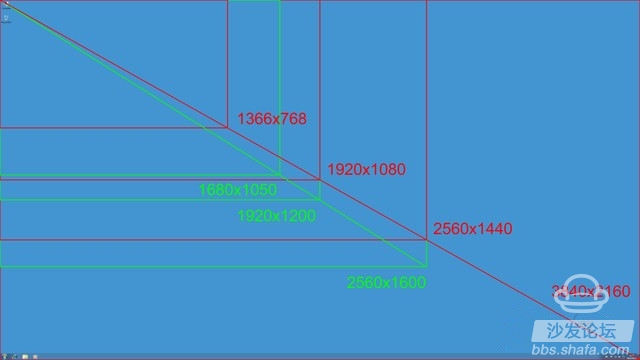
For large screens, especially 55-inch TVs, 4K resolution is appropriate. This problem is true in terms of hardware problems. 4K is a resolution of 3840×2160, and what we traditionally call 1080P or full HD is a resolution of 1920×1080. These numbers are worthy of being horizontal and vertical. The number of pixels. The more pixels, the clearer the picture. If we look at embroidery, we can also understand that the more dense the stitches are, the more refined the embroidery is, and the truth is the same.

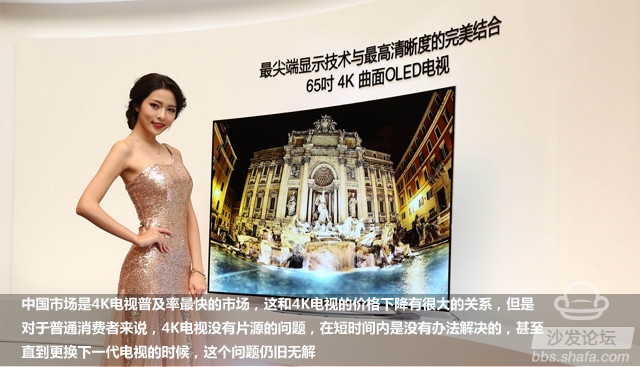
At present, there is no way to solve the problem of 4K chip sources in the world. China has just strenuously implemented the 1080P television signal transmission, and it is still not very popular. The effect of upgrading the 4K is still far behind. Therefore, the author's proposal is that if you are an actual user, then you buy a 1080P TV price discount, the effect is certainly enough. However, the price of 4K TV is also falling. If you have enough funds, you may also try 4K TV.
Second, quantum dot technology is
In addition to the 4K monitor, the store also has Quantum TV on sale. What is this product that sounds like a dazzling thing? In fact, the advantages of quantum dot TV are mainly in the aspect of color. It can provide an ultra-wide color gamut. The simple understanding of the role of the wide color gamut is to make the picture of TV more colorful and more realistic. And this color enhancement is only related to the backlight of the LCD panel, because at present, regardless of 4K TVs, smart TVs, and curved TVs, etc., they can't achieve color enhancement as long as they do not change the backlight technology, so when someone and you When we say that the color of our 4K TV is better, you need to think carefully.
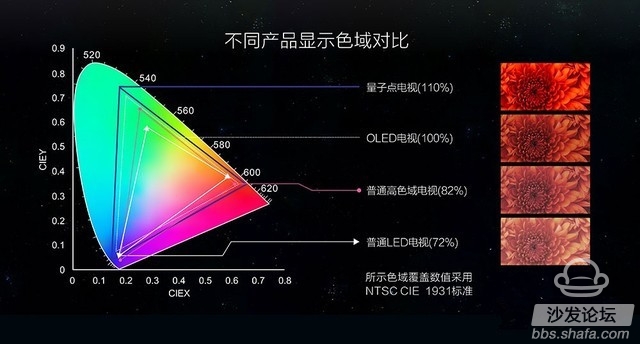
When it comes to changes in the backlight, in fact, the development of this technology has not stopped. The CCFL backlight used in old-fashioned liquid crystal displays, that is, cold-cathode fluorescent tubes, is similar to the kind of lamp used in our original bedroom. This small size of light is placed behind the LCD panel to provide the light source for the LCD panel, but the lamp is eventually eliminated due to high energy consumption, severe attenuation problems, and so on. So the LED solid-state light source appeared. Many people said that "LED TV" actually refers to the changes in the backlight.

The LED light source is small in size, low in energy consumption, and has a very long life span. Therefore, the development speed is very fast. Now, the reason why a mobile phone can be so thin and light is that it is inseparable from the popularity of LED backlight. Without the appearance of LED backlighting, our world will be very different. Can you imagine a mobile phone that is still using a mobile power? However, in order to save costs, the display industry has developed a blue LED mixed yellow phosphor method to achieve the effect of white light, this combination is simple and low cost, very easy to use, but the short board is the color gamut is not high.
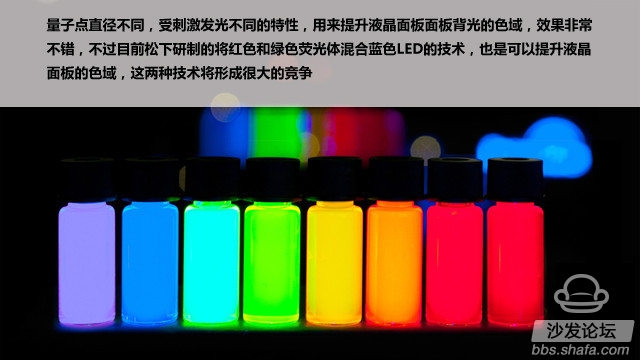
Therefore, in order to improve color gamut, many manufacturers have also been using RGB LED backlights, that is, using three-color LEDs to enhance the color gamut. However, the cost of this solution is high, and the space required is also large, so it has not always been a perfect solution. The emergence of quantum dot technology finally changed this situation. Quantum dots are composed of zinc, cadmium, selenium and sulfur atoms and are nanomaterials with a crystal diameter between 2-10 nanometers. Because of its unique optoelectronic characteristics, after being subjected to photoelectric stimulation, very pure high-quality monochromatic light of various colors is emitted according to the diameter of the quantum dots. Based on this feature, if the quantum dot material is used on the backlight of the television, the full spectrum of light can be emitted with the blue LED illumination, so that the backlight can be fine-tuned, thereby greatly improving the color gamut performance and making the color more vivid.
Therefore, quantum dot TV is still a LCD panel TV, but the composition of the backlight is changed, thus improving the effect of the color gamut. Quantum dot technology can also be applied to various resolutions and various sizes of panels. It is believed that quantum dot products will become popular in the future.
Third, where is the mystery of laser television
What is "laser television"? This problem is also plagued by many people. Judging from the current situation in the stores, the frequency of "laser television" is not high. I expect the exposure of this product may be higher in the future. In fact, the laser can't be used as the backlight of the LCD panel. This has no advantage over the mature LED backlight market. The so-called "laser television" is essentially a projector product.

The current "laser television" on the market is composed of: a large-size curtain plus a projector placed in front of the curtain. The reason why it becomes a laser television is that the projector uses a laser light source. If you are familiar with the projector's friends actually know that there are three types of projector light. The most popular is the ultra-high pressure mercury lamp, which is the kind of projector we always see in classrooms and conference rooms. 99% of these bulbs are used. However, it cannot be used for long-term viewing in homes due to problems such as high heat and short use time.
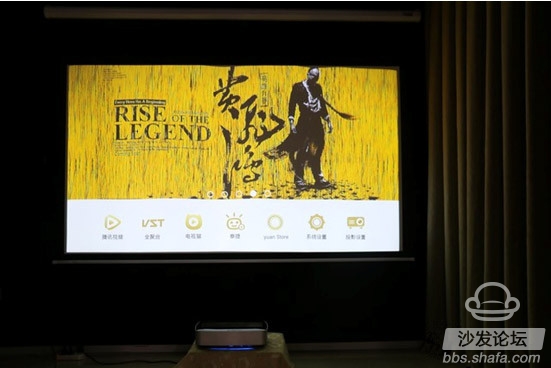
So many people are thinking of ways to change the projector to a new light source so LED light source and laser light source appear. The advantages of LED light source We have already mentioned above, small size, long life, but the current LED light source can not achieve high brightness, it is difficult to meet the projector needs, so LED light source in the projector field also has development, but only limited In the field of pico projectors. Laser light source is the advantage of both LED and can provide high brightness, so the laser is used for the above household light source.
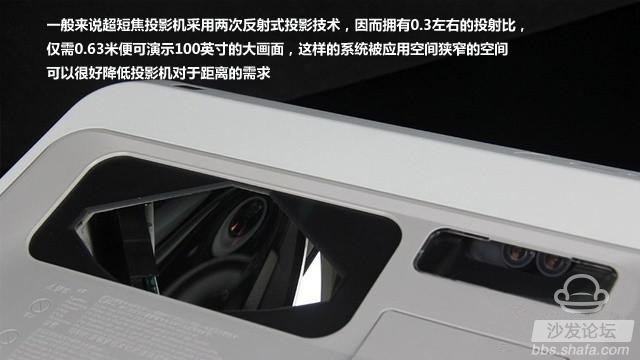

Most surface products are still based on the development of LCD panels
The use of LCD panels to create curved products is actually not suitable in nature. Therefore, the current liquid crystal material is not suitable for bending. When it is bent, it can only be hard baked, and the backlight system of the liquid crystal panel does not adapt to this bending effect, resulting in non-uniform distribution of the backlight and light leakage. However, in order to create a novelty experience, many panel makers are still full panels of suppliers. From the curvature of 4000R to the curvature of 2000R, panels with different degrees of bending are available on the market.
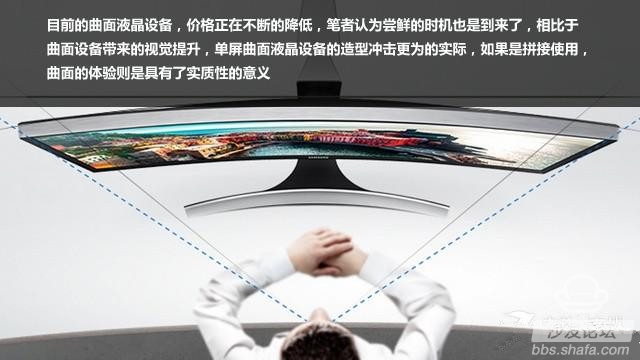
From the technical side, it is not difficult to realize a curved LCD panel, but the effect is not perfect. From the perspective of giving consumers visual perception, in fact, the effect of surface products is not necessarily too much to have. The main advantage of surface products is that they are peculiarly shaped. As for the real display effect, the so-called “immersion†in marketing is not particularly obvious. The author believes that the curved product is only suitable for the curious user. And curved surface products based on liquid crystal panels, the future development prospects are not particularly good.
The OLED panel is a new technology. Above, we said a lot of LCD panel technology. In fact, the difference between the LCD panel and the OLED panel is very large. The OLED panel does not need a backlight and is a self-illuminated display medium. At present, the technology of how to produce OLED panels is continuously improving, and the traditional production methods are used to expand large-size flat panel products. This kind of OLED panel has better color and can also realize advantages such as high resolution and ultra-narrow frame, and there is no weak point compared with the top LCD panel. And with the advancement of technology, the lightness and thinness of OLED panels, the color advantages will become more and more obvious, and the price will become closer to the people. It is clear that OLED panels are the direction of future development.
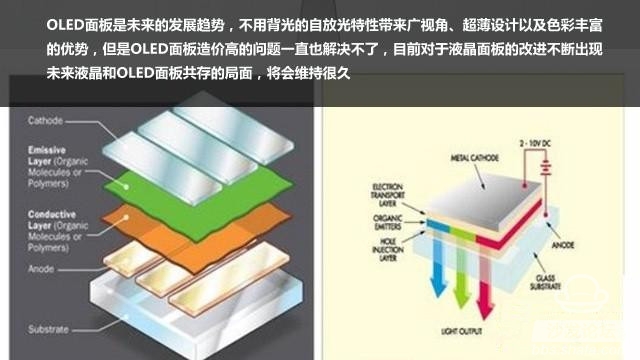
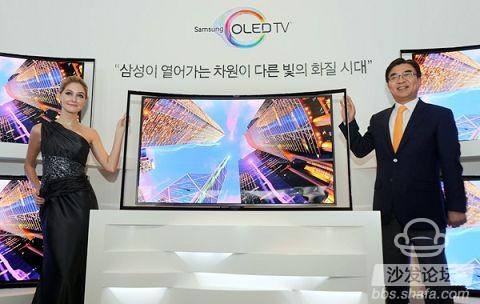
The OLED products currently sold in the market, that is, the large-screen OLED TVs we see, the production methods and the LCD panels have many similarities. The biggest advantage lies in the color and thinness, but the disadvantages are also there, that is, the prices are relatively expensive. It does not apply to ordinary consumers. However, OLEDs are certainly more advanced display media.

Full text summary:
Standing in the store, we can feel a lot of novel display products, that kind of product is suitable for themselves, what is the technology behind these products? Today, we mainly analyze the development of more advanced display products. We believe that with this knowledge, you will not feel lost when you stand in the market. Whether it is a 4K TV or a curved TV, or a QD product that sounds dazzling, the essence is still an LCD TV. Just compared to traditional products, they have some delightful improvements. The OLED products are completely different products, and they are the future development trend, but they are not yet plump. As for laser television, it is actually an ultra-short focal reflection type projector system.
4K TV is how is it? Is this product worth buying?
The author's friends always asked these basic questions when they were on the market. In the face of the ever-changing display technology, the author suddenly realized that as a friend who usually does not pay much attention to this market, it may not be very clear for many avant-garde changes. In the past, the author and my colleagues have been popularizing what is the wide-view panel and the principle of LED-backlit TV. These are once confusing changes, and many of our friends have gradually learned. However, the products in the stores have undergone new changes. How to help “Xiaobai†quickly understand the new developments of display product stores is a problem to be solved in this paper.

You can't use white when you spend money on LCDs.
First we solve the problem of 4K resolution. Resolution is an important indicator of the current display products, from the mobile phone to the large-screen display, the resolution of the standard to judge the quality of the product is consistent. However, this standard is not so clear, because different screen sizes have different requirements for the resolution. For example, for a mobile phone, the resolution of a 5.5-inch screen with 2K is basically the limit. If it continues to improve, it is meaningful. Not much. Because the human eye can not resolve such a high PPI.

The development of 4K resolution is the result of too advanced hardware configuration. In fact, from the aspects of shooting, transmission, playback, and storage, it is not ready to face 4K display. It is even more so for ordinary consumers, and they cannot cobble together so much. Resources
For large screens, especially 55-inch TVs, 4K resolution is appropriate. This problem is true in terms of hardware problems. 4K is a resolution of 3840×2160, and what we traditionally call 1080P or full HD is a resolution of 1920×1080. These numbers are worthy of being horizontal and vertical. The number of pixels. The more pixels, the clearer the picture. If we look at embroidery, we can also understand that the more dense the stitches are, the more refined the embroidery is, and the truth is the same.

But buying a 4K monitor can't be seen purely from the hardware, because the 55-inch panel with 4K resolution is indeed effective. When you are in the store, you can see that the effect of the promoter using 4K source is really good, but if You moved home to see it but found that the picture became less clear. This is because the environment of the store is a “perfect environmentâ€, which means that the store provides a full experience of 4K players, 4K sources and 4K TV. At home, the average user can only provide 4K TV, no HD signal and output devices, which seriously affect the 4K TV's clarity.

At present, there is no way to solve the problem of 4K chip sources in the world. China has just strenuously implemented the 1080P television signal transmission, and it is still not very popular. The effect of upgrading the 4K is still far behind. Therefore, the author's proposal is that if you are an actual user, then you buy a 1080P TV price discount, the effect is certainly enough. However, the price of 4K TV is also falling. If you have enough funds, you may also try 4K TV.
Second, quantum dot technology is
In addition to the 4K monitor, the store also has Quantum TV on sale. What is this product that sounds like a dazzling thing? In fact, the advantages of quantum dot TV are mainly in the aspect of color. It can provide an ultra-wide color gamut. The simple understanding of the role of the wide color gamut is to make the picture of TV more colorful and more realistic. And this color enhancement is only related to the backlight of the LCD panel, because at present, regardless of 4K TVs, smart TVs, and curved TVs, etc., they can't achieve color enhancement as long as they do not change the backlight technology, so when someone and you When we say that the color of our 4K TV is better, you need to think carefully.

The effect of color gamut is related to the richness of color, and the wider color gamut has always been the goal pursued by humans. The traditional LCD panel color gamut is a short board, and the emergence of quantum dots backlighting has greatly improved the color gamut.
When it comes to changes in the backlight, in fact, the development of this technology has not stopped. The CCFL backlight used in old-fashioned liquid crystal displays, that is, cold-cathode fluorescent tubes, is similar to the kind of lamp used in our original bedroom. This small size of light is placed behind the LCD panel to provide the light source for the LCD panel, but the lamp is eventually eliminated due to high energy consumption, severe attenuation problems, and so on. So the LED solid-state light source appeared. Many people said that "LED TV" actually refers to the changes in the backlight.

The thin and light characteristics of quantum dot backlights make this technology applicable behind different sizes of LCD panels. This means that televisions and laptops can use this technology.
The LED light source is small in size, low in energy consumption, and has a very long life span. Therefore, the development speed is very fast. Now, the reason why a mobile phone can be so thin and light is that it is inseparable from the popularity of LED backlight. Without the appearance of LED backlighting, our world will be very different. Can you imagine a mobile phone that is still using a mobile power? However, in order to save costs, the display industry has developed a blue LED mixed yellow phosphor method to achieve the effect of white light, this combination is simple and low cost, very easy to use, but the short board is the color gamut is not high.

Different size quantum dots glow effect
Therefore, in order to improve color gamut, many manufacturers have also been using RGB LED backlights, that is, using three-color LEDs to enhance the color gamut. However, the cost of this solution is high, and the space required is also large, so it has not always been a perfect solution. The emergence of quantum dot technology finally changed this situation. Quantum dots are composed of zinc, cadmium, selenium and sulfur atoms and are nanomaterials with a crystal diameter between 2-10 nanometers. Because of its unique optoelectronic characteristics, after being subjected to photoelectric stimulation, very pure high-quality monochromatic light of various colors is emitted according to the diameter of the quantum dots. Based on this feature, if the quantum dot material is used on the backlight of the television, the full spectrum of light can be emitted with the blue LED illumination, so that the backlight can be fine-tuned, thereby greatly improving the color gamut performance and making the color more vivid.
Therefore, quantum dot TV is still a LCD panel TV, but the composition of the backlight is changed, thus improving the effect of the color gamut. Quantum dot technology can also be applied to various resolutions and various sizes of panels. It is believed that quantum dot products will become popular in the future.
Third, where is the mystery of laser television
What is "laser television"? This problem is also plagued by many people. Judging from the current situation in the stores, the frequency of "laser television" is not high. I expect the exposure of this product may be higher in the future. In fact, the laser can't be used as the backlight of the LCD panel. This has no advantage over the mature LED backlight market. The so-called "laser television" is essentially a projector product.

Ultra-short-focus projector has long been applied in the field of whiteboard to achieve close-range large-screen applications in education and business markets. Its expansion of the home market is just beginning
The current "laser television" on the market is composed of: a large-size curtain plus a projector placed in front of the curtain. The reason why it becomes a laser television is that the projector uses a laser light source. If you are familiar with the projector's friends actually know that there are three types of projector light. The most popular is the ultra-high pressure mercury lamp, which is the kind of projector we always see in classrooms and conference rooms. 99% of these bulbs are used. However, it cannot be used for long-term viewing in homes due to problems such as high heat and short use time.

This is the close-range projection of the screen effect of laser television. It can also prevent people from passing the screen and disturbing the screen.
So many people are thinking of ways to change the projector to a new light source so LED light source and laser light source appear. The advantages of LED light source We have already mentioned above, small size, long life, but the current LED light source can not achieve high brightness, it is difficult to meet the projector needs, so LED light source in the projector field also has development, but only limited In the field of pico projectors. Laser light source is the advantage of both LED and can provide high brightness, so the laser is used for the above household light source.

In addition, the lens of this projector also has certain advantages. The traditional projector needs to be hoisted, and the projector in the "laser television" uses ultra-short focal reflection technology, and the projection distance is compressed to a very short distance. Putting it on the bottom of the screen can achieve a large size effect. This is all the secrets of "laser TV".
When it comes to surface products, there are many product lines that are currently trying, not just TVs, monitors, and mobile phones. Most of these curved products are built on the basis of LCD panels, and some of them are products of OLED panels. What is an OLED panel? We will continue to talk about it later. Let's talk about curved surface products based on LCD panels.
When it comes to surface products, there are many product lines that are currently trying, not just TVs, monitors, and mobile phones. Most of these curved products are built on the basis of LCD panels, and some of them are products of OLED panels. What is an OLED panel? We will continue to talk about it later. Let's talk about curved surface products based on LCD panels.

Most surface products are still based on the development of LCD panels
The use of LCD panels to create curved products is actually not suitable in nature. Therefore, the current liquid crystal material is not suitable for bending. When it is bent, it can only be hard baked, and the backlight system of the liquid crystal panel does not adapt to this bending effect, resulting in non-uniform distribution of the backlight and light leakage. However, in order to create a novelty experience, many panel makers are still full panels of suppliers. From the curvature of 4000R to the curvature of 2000R, panels with different degrees of bending are available on the market.

From the technical side, it is not difficult to realize a curved LCD panel, but the effect is not perfect. From the perspective of giving consumers visual perception, in fact, the effect of surface products is not necessarily too much to have. The main advantage of surface products is that they are peculiarly shaped. As for the real display effect, the so-called “immersion†in marketing is not particularly obvious. The author believes that the curved product is only suitable for the curious user. And curved surface products based on liquid crystal panels, the future development prospects are not particularly good.
The OLED panel is a new technology. Above, we said a lot of LCD panel technology. In fact, the difference between the LCD panel and the OLED panel is very large. The OLED panel does not need a backlight and is a self-illuminated display medium. At present, the technology of how to produce OLED panels is continuously improving, and the traditional production methods are used to expand large-size flat panel products. This kind of OLED panel has better color and can also realize advantages such as high resolution and ultra-narrow frame, and there is no weak point compared with the top LCD panel. And with the advancement of technology, the lightness and thinness of OLED panels, the color advantages will become more and more obvious, and the price will become closer to the people. It is clear that OLED panels are the direction of future development.

In addition, the OLED panel is also able to achieve the effect of bending. This bending is not a rigid bending, but a new production method. “Printing†is a new force in the display industry. Spraying OLED luminescent materials on flexible substrates, even on flexible substrates, can easily realize the production of flexible screens. This type of screen can get rid of the problem of backlighting. , really make the screen change. However, this "printing" approach is not yet particularly mature.

The effect of the natural fit of OLED panels in the future can have a variety of forms as the technology develops
The OLED products currently sold in the market, that is, the large-screen OLED TVs we see, the production methods and the LCD panels have many similarities. The biggest advantage lies in the color and thinness, but the disadvantages are also there, that is, the prices are relatively expensive. It does not apply to ordinary consumers. However, OLEDs are certainly more advanced display media.

Consumers don't understand that new developments in display technology tend to be big in the market. This article analyzes some of the avant-garde technologies that we hope can help everyone.
Full text summary:
Standing in the store, we can feel a lot of novel display products, that kind of product is suitable for themselves, what is the technology behind these products? Today, we mainly analyze the development of more advanced display products. We believe that with this knowledge, you will not feel lost when you stand in the market. Whether it is a 4K TV or a curved TV, or a QD product that sounds dazzling, the essence is still an LCD TV. Just compared to traditional products, they have some delightful improvements. The OLED products are completely different products, and they are the future development trend, but they are not yet plump. As for laser television, it is actually an ultra-short focal reflection type projector system.